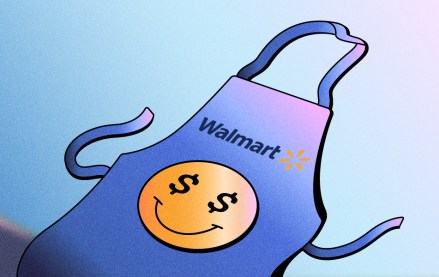Register by Jan 13 to save on passes and connect with marketers from Uber, Bose and more
How eyewear maker Luxottica takes control of programmatic

Luxottica Group, whose brands include Ray-Ban, Oakley, Sunglass Hut and LensCrafters, has embraced programmatic since 2015. The eyewear maker developed its own data management platform last year and is now building its in-house ad-targeting capabilities.
Nicola Saraceno, svp of retail marketing and customer relationship management for Luxottica, said while there’s fraud in ad tech, programmatic can help his company understand its customers, deliver relevant content and create seamless experiences across its roughly 9,000 retail stores and online.
“Not everyone buys a pair of glasses a week, which is a challenge for us,” said Saraceno, addressing attendees at the Programmatic I/O conference in New York City on Oct. 26. “Programmatic allows us to see where our customers are and talk to our customers through the long life cycle. We are reacting faster to our campaign results, and we own the data. But programmatic is still a black box, and we only started opening half of it.”
Tiziano Cembali, vp of customer targeting for Luxottica, who joined Saraceno on stage, said the company started building its programmatic infrastructure last year to take a more holistic view of customer targeting. Cembali said his team spent around three months developing an in-house data management platform, which is the backbone of Luxottica’s programmatic infrastructure.
“In a traditional marketing setup, media planning and CRM planning are separate,” said Cembali. “But with a programmatic setup, we bring media planning and CRM planning together, with our DMP sitting in the center [of the structure].”
Cembali said the goal of this year is to improve Luxottica’s customer targeting within the programmatic infrastructure. The company’s media team recently moved from Ohio to New York City to stay close to agencies and updated on ad tech trends, and it’s hiring marketers in New York City, he said.
Luxottica continues to work with media agencies. Luxottica has OMD as its lead media shop and works with multiple other media agencies and somewhere between two and five demand-side platforms on a campaign basis, said Saraceno after his presentation.
Saraceno and Cembali said that in 2018, they plan to roll out their programmatic expertise to Luxottica-owned brands in different markets. There’s an ad tech knowledge gap between advertisers and their agencies, and brand marketers must close the gap on their own, Saraceno said.
“Programmatic is relatively new for us. Two and a half years ago, we were not internally set up enough to let our agencies deliver the best; we didn’t challenge them enough,” said Saraceno. “Now, we are working with the same partners, but we know much more about programmatic and we constantly challenge our partners. Agencies have tons of expertise — use it.”
Image via Luxottica’s company website
More in Marketing

Inside the brand and agency scramble for first-party data in the AI era
Brands are moving faster to own first-party data as AI and privacy changes alter the digital advertising landscape.

Walmart Connect takes a play out of the Amazon playbook to make agentic AI the next battleground in retail media
The next retail media war is between Walmart Connect’s Sparky and Amazon’s Rufus, driven by agentic AI and first-party data.

What does media spend look like for 2026? It could be worse — and it might be
Forecasts for 2026 media spend range from 6.6% on the lower end to over 10% but the primary beneficiaries will be commerce, social and search.








